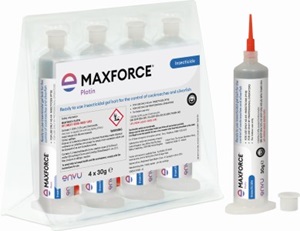Major Milestones in the Cockroach Control Market Evolution
Cockroaches have long been known as resilient pests that pose an evolving threat. Fortunately, the cockroach insecticide market has consistently risen to the challenge, refining its tools and techniques to combat this pervasive problem.
In this article, we look at the key stages of this ongoing battle and what the future holds.
Late 19th and early 20th Century
Cockroach control has a long history, using methods ranging from trapping to natural predators to insecticidal plants.
The late 19th century marked the beginning of modern cockroach control. This was brought about by the introduction of the first inorganic compounds, such as boric acid, which was one of the first insecticides used against cockroaches.
The early 20th century saw the development of synthetic insecticides. In the 1930s, DDT (dichloro-diphenyl-trichloroethane) was discovered, which proved effective against a wide range of insects and was widely used after the Second World War. By the 1950s, however, its extensive use had led to widespread resistance problems, prompting a search for alternatives.
Late 20th Century
Resistance to DDT led to the development of new classes of pesticides called organophosphates and carbamates. These became popular in the 1960s and 1970s. While effective in controlling cockroaches, these insecticides posed a greater risk to human health and the environment.
Growing awareness of the health and environmental impacts of these chemicals led to regulatory changes. Stricter regulations were imposed, eventually leading to the phase-out of many organophosphates and carbamates.
A renewed search for new solutions in cockroach control was needed, which led to the introduction of pyrethroids in the late 60's and early 70's. Pyrethroids, including substances such as cypermethrin and deltamethrin, offered a safer alternative with lower toxicity to mammals.
The Rise of Gel Bait
In the late 1990s, cockroach gel baits were introduced and became widely popular for their simplicity, safety and efficacy.
This marked a significant advance in cockroach control. Gel baits eliminated the need for night-time spraying, were quicker to apply, required minimal cooperation from residents and provided excellent colony control through a ‘domino’ effect.
|
Domino Effect: a Major Scientific Breakthrough Gel baits have a dual effect in cockroach control:
|
Maxforce Platin takes cockroach control to new heights
Introduction of Clothianidin
Launched in 2015, Maxforce Platin brought a new dimension to cockroach control. It combines a new active ingredient, clothianidin, with a redesigned bait matrix to improve efficacy and prevent bait aversion.
This innovative product also enables a rotation strategy, protecting against resistance not only to neonicotinoids but also to other active ingredients.
|
Blue Bead Technology Maxforce Platin uses Blue Bead technology, which incorporates a feeding stimulant and capsule technology within the gel matrix. This unique feature provides unrivalled and long-lasting palatability, ensuring that cockroaches are attracted to and consume the bait, increasing its effectiveness. |
Tackling Sugar Aversion
In the late 1990s, some cockroach populations in the USA began to show an aversion to glucose, a common bait ingredient. This behaviour provided a survival advantage when glucose was combined with an active ingredient, resulting in the emergence of glucose-averse strains.
To overcome this challenge, manufacturers adapted bait formulations to eliminate simple sugars and other ingredients that cockroaches could avoid.
At Envu, we developed Maxforce Platin with a blend of complex sugars specifically to counter sugar aversion.
These modifications to formulations have proven effective in maintaining bait efficacy despite changes in cockroach behaviour.
Looking to the future
These developments throughout the years reflect advances in scientific research, changes in pest behaviour and shifts in regulatory frameworks. For over 40 years, Maxforce has played a key role in this evolution.
But the battle is far from over. Increased collaboration between researchers, manufacturers and regulators is essential to address this global challenge and ensure the availability of effective control methods.
By combining cutting-edge solutions such as Maxforce Platin with sustainable practices and technological innovation, the pest control industry can continue to grow and successfully overcome future obstacles.

